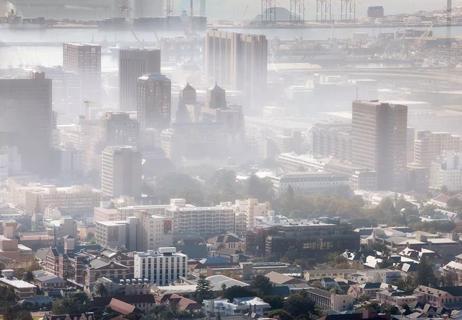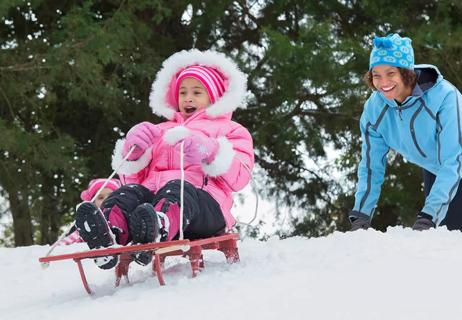Establish rules and have a safety plan in place

From camping trips to backyard marshmallow roasting, bonfires have always been a popular way to enjoy the early fall season.
Advertisement
Cleveland Clinic is a non-profit academic medical center. Advertising on our site helps support our mission. We do not endorse non-Cleveland Clinic products or services. Policy
And while a cozy fire can be a fun experience for the whole family, it can also be risky when you involve kids and teens. As much as we’re enthralled by a bonfire, it’s also important to follow general guidelines to avoid burn injuries or smoke inhalation.
Pediatrician Purva Grover, MD, talks about the best ways to keep your kids safe during a bonfire.
When it comes to sharing a bonfire outside with your family, there are some clear green and red flags to be aware of.
Before you even get the logs or propane out, it’s important to check what kind of weather you can expect. The direction and strength of the wind can really be the deciding factor in how you plan your bonfire.
“You want to check not only because of possible inclement weather. You also really need to check for wind direction, or if there’s any fire advisory in your community,” advises Dr. Grover. “Those are extremely important things because that can really determine if it’s even safe to have this event or not.”
Fire is … well, fire. By its nature, fire can be extremely unpredictable. That’s why you’ll feel much more at ease and relaxed if you’re prepared for any fire-related emergencies.
“Making sure you have a plan to douse the fire out or to stop the flames immediately is extremely important,” says Dr. Grover.
Advertisement
This means, make sure you have one or more of the following:
Besides having a plan to put out a fire quickly, be sure to also have a fire-aid kit or bandages nearby to treat a minor burn from any stray ashes or in case your kid falls and scrapes an elbow or knee.
When choosing the ideal spot for your fire, having enough breathing room is key (literally). You don’t want the fire pit to be too close to your house or tent. This may depend on what state you’re in, but the general rule is to have your fire 21 feet away from your home.
The fire you’re building will warm you even from 3 feet away — which is the distance Dr. Grover recommends between children, pets and flammable furniture and the fire pit. When prepping your kids for the bonfire, lay out a clear “safety zone” that they need to stay within (you could even extend it beyond 3 feet).
“My rule is 6 feet, but that’s my personal agenda, just because sometimes you need a little bit more leeway,” she says. “Also, avoid bringing any wooden chairs or other flammable furniture too close to the fire either.”
It’s also important that kids aren’t playing anywhere near the fire. This means no running, skipping or horseplay around the flames. If your kids are doing other things — like tossing around a football or pelting each other with foam dart guns — have them stay 20 feet away from the fire.
You’re always around when your kids are swimming right? Well, the same rules apply. Having fun around the fire also requires a certain amount of adult supervision. Even if you think your tweens and teens can take care of themselves (and they’ll definitely try to convince you of that), Dr. Grover still stresses the importance of having at least one person keep an eye on kids, no matter how old they are.
Advertisement
“It doesn’t matter what age, what sensibility and maturity level they are because accidents can happen,” she notes. “And when accidents happen, you need someone with a cool level head around to take care of things. That’s something which children are just not prepared for.”
Especially for young children who are eager to wear their princess or superhero costumes, it’s important to have somewhat of a dress code when gathering around the fire. Certain materials like nylon, polyester and linen tend to be more flammable than fabrics like wool.
Also: shoes! Be sure you and your kids are wearing appropriate footwear — this means no open-toed shoes that leave toes vulnerable to flying embers.
Especially with kids around, tossing things into the fire may end up more dangerous than fun really quickly.
Sometimes, the harm can come from a piece of the item flying back from the fire. But Dr. Grover says that simply being too close to the flames when throwing something in can be an invitation for an accident.
Some common items that get thrown into the fire that could cause accidents include:
Of course, kids seem to be fascinated by throwing things into fires. So, if you’d like, Dr. Grover suggests having a designated “throw basket” with items that are safe for kids to throw into the fire. (You’ll still need to supervise here!) This teaches your kids that they can throw certain things — like twigs or marshmallows — into the fire, but everything else is off limits.
Advertisement
But keep in mind: While items like paper, garbage or cardboard can seem harmless enough, they can still throw off embers that can cause a minor burn, especially if a child is getting too close.
“Make it clear that they are not allowed to throw anything in the fire unless it’s approved by the parents,” says Dr. Grover.
If you do hear a sudden “Ouch!” from someone getting burned, don’t panic. Be sure to immediately investigate the wound and where it happened. If your child got hit with a tiny ember on their hand, you may not need to call anyone. According to Dr. Grover, a small burn can be soothed with some running cold water (no ice!).
But if it’s a more serious burn, or your child is still in pain, you should call a healthcare provider immediately.
“Anything outside of your regular kitchen burn, you need to seek care,” states Dr. Grover.
Whether you’re at a campsite or in your backyard, never turn your back on a live fire. Throughout your party or event, make sure someone is always watching it closely. And when it’s time to call it a night, make sure it’s really out. Even leaving the tiniest flame going can set nearby things on fire.
“Never leave a fire unattended,” warns Dr. Grover. “You have to make sure that the fire has come to a complete, full stop before you leave that property or that fire.”
Advertisement
Even though fire can pose many risks, there’s a safe way to enjoy a bonfire with the family. The key thing to remember is to always pay attention — to your kids and the fire — and have safety precautions in place.
Learn more about our editorial process.
Advertisement

Breathing in toxic smoke can lead to serious health problems

Breathing in polluted air can harm your lungs, heart and more

The type, quantity and duration of your exposure determines your risk of injury or illness

Bottom line? Dress warm, be careful and plan ahead to get the most out of the season

An ER doc shares tips for being careful while having fun

Make sure your wood has been split and stored for at least 6 months

Clean your baby’s mouth with a washcloth or small toothbrush if they have a tooth or you suspect thrush

A glass child is the sibling of someone with special needs — often seen as the easy one, but carrying invisible burdens

If you’re feeling short of breath, sleep can be tough — propping yourself up or sleeping on your side may help

If you fear the unknown or find yourself needing reassurance often, you may identify with this attachment style

If you’re looking to boost your gut health, it’s better to get fiber from whole foods